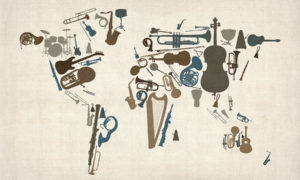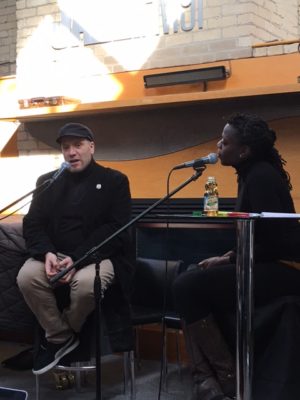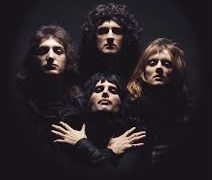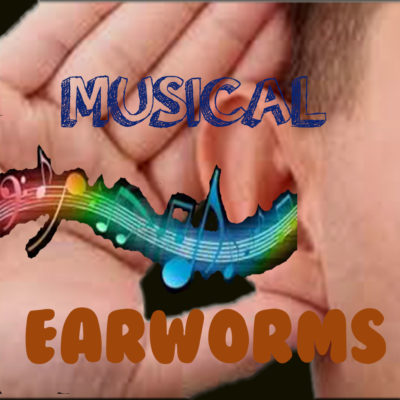PAT CLARKE – THE MAN WITH THE HARMONICA
There are many artists out there who are good at playing an instrument or using the one they were born with (their voice). What makes some of these ‘needles in a haystack’ stand out? Is it their talent? Possibly, but there is only so far you can hone a talent. Then what? What makes people want to see you or hear you over and over again? I believe it’s a combination of characteristics that this man, Pat Clarke, possesses. Talent (no doubt). He plays a wicked harp, sings well and writes intelligently. But he also has wit, personality and instant likability. All of that comes through in his music. Here he tells his story.
As usual, see examples of his music below the story.
“My tastes in music are fairly eclectic, having been brought up listening to my Dads music – classical, traditional jazz, Lonnie Donegan, Burl Ives and Harry Belafonte’s calypso material. Living in British North Borneo up to the age of 8, I didn’t get to listen to radio or watch television until the family returned to England in 1963, just in time to catch the start of the pop scene. Ready Steady Go, then Top Of The Pops were the highlights of my week – Beatles, Stones, Kinks, Spencer Davis, Animals, Troggs, Who, Hollies …marvliss!
The first harmonica playing I really noticed was by Manfred Mann’s Paul Jones on their single 5-4-3-2-1 and, following in my big brother’s footsteps, I bought my first ‘Echo Super Vamper’. Although it was a while before I could really play, I was soon jumping up to play with any band in Rugby that would have me – notably Greasy Kid Stuff who actually got paid for one or two gigs! In those days I was trying to sound like Keith Relf or Captain Beefheart.
At officers training school for the merchant navy I fronted a band for the first time and started writing my first songs. The earliest (now lost) recordings were made at sea, in 1975, on a borrowed reel to reel tape recorder, but it wasn’t until I went to art school in Manchester (1977) that I really started performing.
Playing in various duos (notably ‘The Rotating Kneecaps’ and ‘Hardluck & Whisperin’) on the thriving folk club scene I began exploring blues and folk music, discovering a few old blues-harpmen for the first time. Sonny Terry, Sonny Boy Williamson II, Moses Smith, Little Walter and Snooky Prior are still my favourites.
In my final year at art school, Victor Brox (ex front man with Aynsley Dunbar’s Retaliation) gave me my first break in a working band when college-mate Nick Clarke (a sparky guitarist protege of Victor’s) persuaded him to let me blow iron with his Blues Train. This was valuable experience, playing pubs and clubs all over the north of England, and a gig at Manchester’s Band On The Wall club gave me the buzz of seeing my name in the paper for the first time – Chris Lee wrote in the Evening News that I had “livened up Kansas City with some fairly ripe playing”. A couple of years later Nick decided to leave The Blues Train and we formed our own swinging R&B band, Yes Sir, named after an Elvin Bishop song we covered.
Yes Sir toured for 4 years, ranging from Carlisle’s Twisted Wheel to London’s Rock Garden and many pub & college venues in between, also enjoying some TV appearances and a successful residency at the Atlantis bar in Basel, Switzerland. We released an eponymous single in 1984, with Tom Waits’ Heart Attack and Vine as a double A-side. It was great buzz to see it in the window display of HMV, next to David Bowie’s Let’s Dance and, when Alexis Korner kicked off his Sunday Radio1 show with it, 2 weeks running, we thought we were headed for bigger things. When the band’s attempt for real commercial success with original material petered out in 1985, we called it a day. I began earning a crust with illustration, teaching and driving jobs, writing and recording my own songs on a 4-track cassette.
Wherever I lived and worked, from Manchester to Rugby and London, I found somewhere to do gigs with various duos, trios and bands – blues, pub-rock and heavy rock – until, in 2011, a chance meeting with one of the old band spurred the reformation of Yes Sir, with the intention of sticking to the original good-time ‘ridim & blooz’ music. We are still shaking our pants around the Northwest and hope to release a live album soon.
Now I have a home studio running Cubase, with Sony Vegas for video production. I’m just waiting for a working brain, so I can start using it to produce new music and videos.”
You can find Pat here and here
https://www.youtube.com/watch?v=Xuw2dDgPOPE
https://www.youtube.com/watch?v=vgYUdrYxUW0
https://www.youtube.com/watch?v=4FeTdoSdl1k













